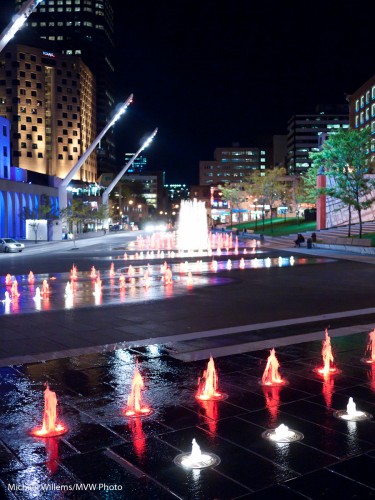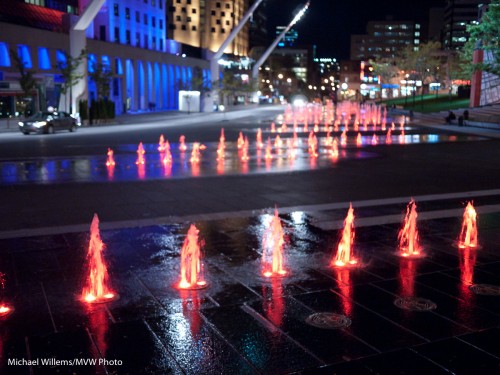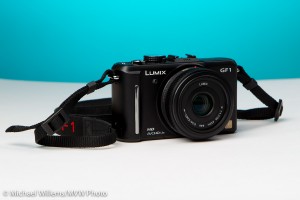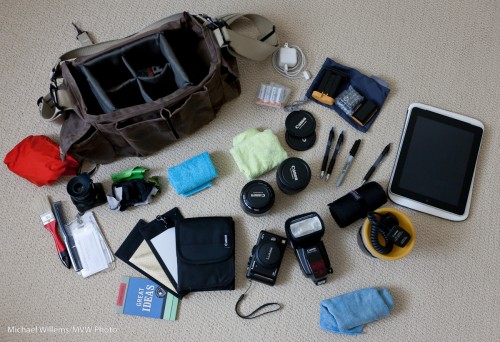So now that I have used the Panasonic GF-1 for a few days, a few quick notes. This is part of a new category on the blog: “Michael’s Quick Judgment“.
Executive summary: I love it, and it will be a very cool addition to my toolbox.
Cool, and sexy:

But that is not enough to spend money. So why would I actually buy a small camera?
Well, for one, because it is lighter and smaller than an SLR. My other cameras (a Canon 1D Mark IV, a 1Ds Mark III, and a 7D) are all very considerably heavier and bigger.
Second, it is easy to take street photos with a small point and shoot. And you can always carry it.
And it is allowed where “pros” are not (London’s Trafalgar Square, Oakville Place Mall, and many other places where “professional” cameras are frowned upon.
So there are places where it fits in, in spite of not being an SLR.
But until recently, small cameras weren’t quite good enough. The small sensor created a lot of image noise at any ISO greater than 100. No longer. With large sensors like the one in this “Micro Four Thirds” spec camera, this is becoming practical.
I came late to the party. These cameras have existed at least since last year. But I like to be a settler, not a pioneer, and as said, David Honl’s Leica two weeks ago in Las Vegas really inspired me. I was carrying a big SLR; Dave had a point and shoot. And got essentially the same shots.
So to start off, here is a shot I took during last Sunday’s Creative Urban Photography course in Oakville:

Knox Presbyterian Church in Oakville
And a full size detail from that shot (click to see it at its actual size):
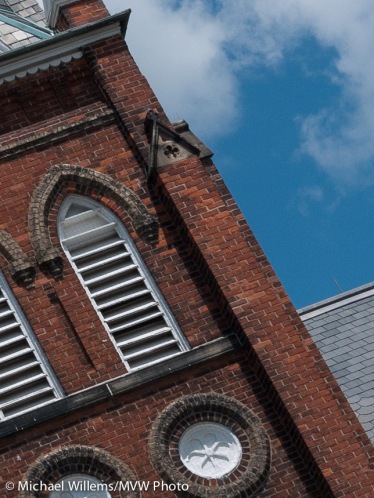
Knox Presbyterian Church in Oakville (detail)
Now I noticed that Lightroom introduced a little noise there; noise I do not see in the original. Look at the sky. Odd, but a very small tweak of Lightroom’s excellent Noise Cancellation fixes that:

Knox Presbyterian Church in Oakville (detail 2)
So let me summarize my feelings about this camera:
Likes:
- The coolness, let’s face it. This camera is very cute, almost Leica-cute.
- The great image quality. And that is what it is all about.
- The large “micro four thirds” sensor.
- That flat 20mm f/1.7 lens (equivalent to 40mm). They call them “Pancake” lenses because they are thin, and they do not come out when you turn on the camera.
- The small form factor.
- The ultra-sharp live-view LCD.
- The flash hotshoe – for my pocketwizards.
- A very convenient (and customizable) AE lock button.
- RAW images.
- Customizable Fn button.
- Great manual focusing, when you choose to use it (turn the ring and the preview zooms in).
- In general, the amazing camera customizability (including tweaking the LCD colours!). This is a camera for pros.
- Super fast response speed: no shutter delay, like on cheap point-and-shoots.
Muuh… neither here nor there; “I can live with it”:
- No viewfinder (an optional extra).
- The tiny fragile flash.
- No in-camera image stabilisation.
- No continuous focus with the 20mm lens.
- Video (but I do not use this camera for video: I have my SLRs).
- Face recognition (including some stored individuals).
- Scene modes (I don’t need them: laudably, you can disable them).
- The way the custom modes work.
Minor dislikes:
- The slippery, nigh-impossible to turn control wheel.
- The click wheel: push to switch functions. Combined with “slippery” above this is a bad combo.
- The “My Menu” that you cannot store the way you want it.
Overall: I am lovin’ it so far, and I have no doubt that this will continue. Amazingly, I am waking around with a small point and shoot.
The big sensor is smaller than an SLR’s, but large enough to give me great selective depth of field, and low noise at higher ISOs. The depth of field and the ability to use fast prime lenses are the main reasons I chose this camera over the excellent Canon G11.
I would normally not dream of shooting the police scanner on my desk in dim office light at 320 ISO and at f/1.7:

Scanner at f/1.7, 320 ISO
But now I can. And do. Look at the images in yesterday’s post. And at this: the 20mm f/1.7’s lens has an amazing ability to produce those wonderful blurred backgrounds. Large aperture and close focusing ability (20cm) produce pictures like this:

Camera strap, GF1 with 20mm f/1.7 lens
Beautiful bokeh – but the amazing thing is that there is any bokeh at all in a small camera.
And then there is the ability to judge exposure before you take the shot, and to lock the fast-reacting spotmeter on a mid-grey object: very cool even for an experienced SLR shooter.
Megapixels, you ask? Not important. If it has more than six, it’s enough. Too many means more noise. This camera has 12, which is about the ideal number. ‘Nuff said.
Of course Nikon, Canon et al are also going to do “small cameras with big sensors”; and in any case, if I had a spare $8k I’d go with a Leica for fun, but this is almost as good and it’s here now, for a fraction of that cost.
Michael’s Quick Judgment: highly recommended, 8/10.
Postscript: see a few more GF1 shots in today’s blog posts, including some taken with an external flash and Pocketwizards.

